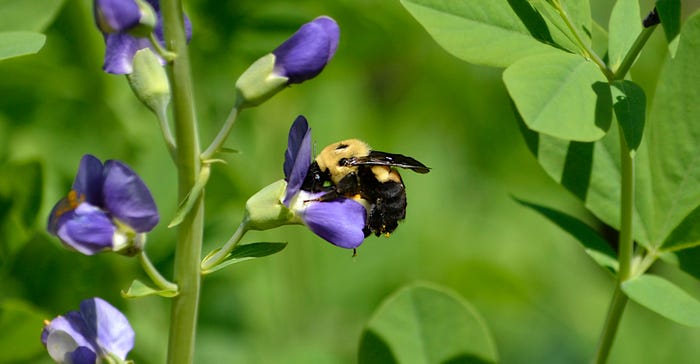January 13, 2023

If there were royalty in the house of native landscaping, the wild indigo would be sitting squarely on the throne. Indigos are always top performers when it comes to longevity, reliability and attracting bumblebees.
The Baptisia species are often referred to as false or wild indigo. False because it is related to true indigo (the plant that renders blue dye), and wild, I guess, because it was never row-cropped like true indigo.
These native plants are often overlooked for landscaping — perhaps it’s because their names are not as catchy as others offered in garden centers. Non-native gardeners peruse rows and rows of plants with appealing and seductive names such as “Sunshine Superman,” “Screaming Yellow” and “Happy Returns.”
The native plant row bears the names false indigo, clammyweed, ironweed, liverwort, sneezeweed, milkweed, horsemint, creeper, spreading, trailing and knotweed. It’s no wonder that native landscaping gets a bad rap by so many, and that native plants are so often categorized as weeds. They’re actually still called weeds, after hundreds of years since being named.
Take time to look for the Baptisia species of wild indigo as it offers beauty for your landscape and food for the bees. Don’t know what name to look for? Click through the photo gallery for a glimpse of these native plants, and discover how they will perform on your farmstead.
Woodbury was the horticulturist at Shaw Nature Reserve for 30 years and continues contract work on native landscaping education. He operates Cacalia: Native Garden Design and Wilding.
About the Author(s)
You May Also Like




